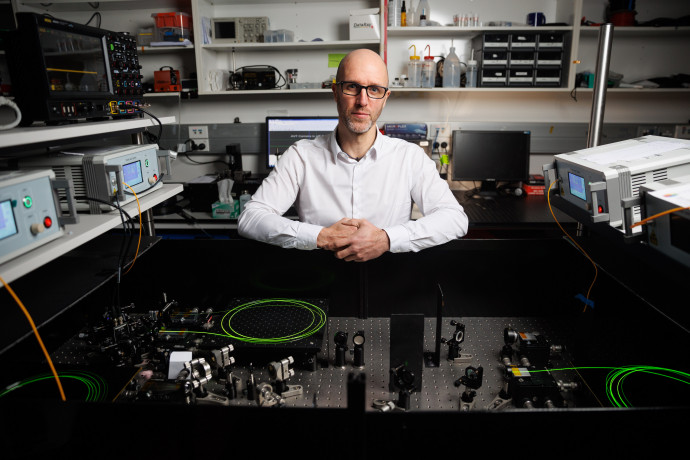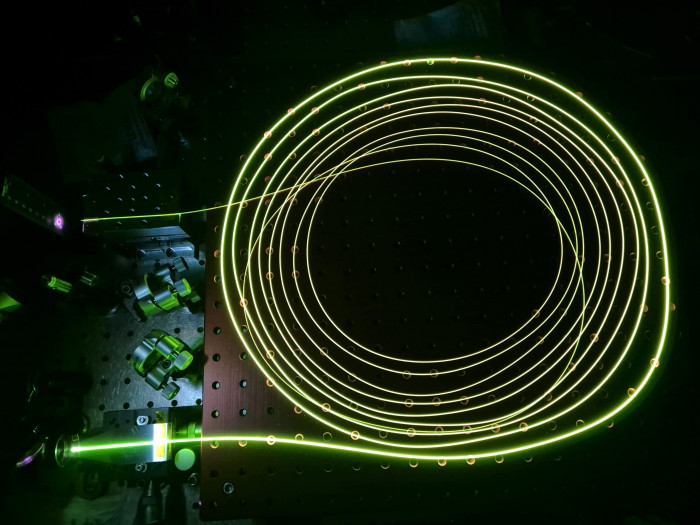Research
Published 21 August 2024Designing the Lasers of Tomorrow

Lasers are instrumental for a variety of applications in our everyday lives, from fingerprint scanning and fibre optics to precision medicine and pollution monitoring
The capability of a given laser depends on its output power – the rate at which it emits energy – and on its “bandwidth”, the range of wavelengths of light it can produce. Ultrafast “broadband” lasers that can maintain power over a broad range of wavelengths are particularly in demand but technically difficult to produce.
The main objective of this Marsden project is to explore the design and development of novel fibre-based laser source architectures for high-power and broadband beam generation. In collaboration with an international partner, Dr Aguergaray and his team have designed custom fibres that will simultaneously amplify and broaden the spectrum of delivered laser light. The team’s novel laser architecture - which uses a linear cavity seed source and a complex, non-linear amplification system – has set a new benchmark in the field, delivering the highest recorded average power and pulse energy for a single-mode amplifier system (10.2 Watts and 400 nJ, respectively).

Fibre laser amplifier in operation (photo supplied)
This laser architecture was developed with the aid of a novel numerical model, which allowed the team to investigate the effects of fibre properties (such as its dimensions and chemical composition) and pulse dynamics on laser output performance. This model can be easily adapted to inform the development of other fibre-based lasers. Notably, the model predicts that further improvements in laser power and spectral bandwidth are possible if pulse and fibre inputs are optimised. Specifically, non-linear amplifiers (like the one used in their current architecture) should be capable of delivering 25 Watts of average power over the entire mid-IR spectrum (2.4 – 6 μm), a 10-50 fold improvement over current systems! The team will endeavour to build this system in the coming years.
Dr Aguergaray and his team hope that their cutting-edge research will seed the development of laser-based products with new and improved applications in fields such as materials processing, environmental monitoring and laser-based surgeries. It’s safe to say that the future of this technology is looking bright.
RESEARCHER
Dr Claude Aguergaray
ORGANISATION
Waipapa Taumata Rau University of Auckland
FUNDING SUPPORT
Marsden Fund
CONTRACT OR PROJECT ID
UOA1919
